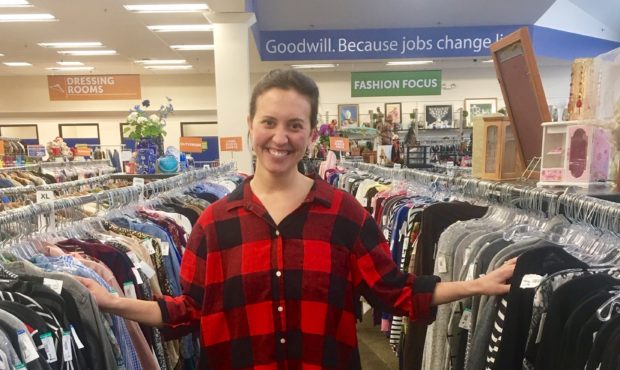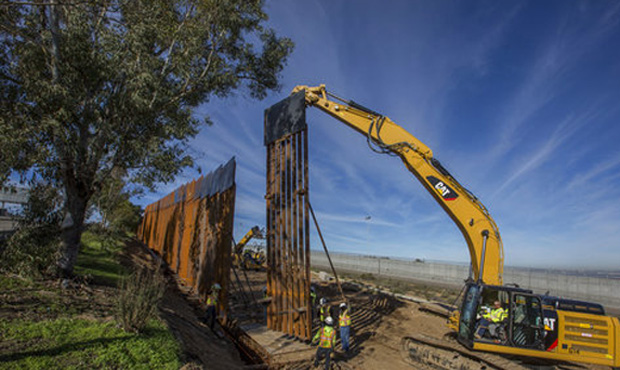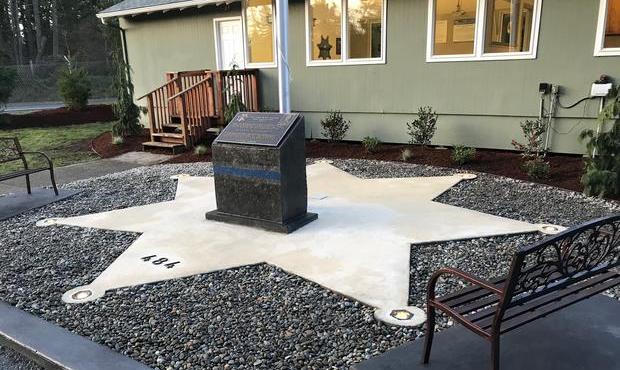Inside the tiny home solution in Seattle
May 18, 2018, 2:35 PM

A line of tiny houses stand with their backs to the adjacent street at a homeless encampment in Seattle. (AP Photo/Elaine Thompson, File)
(AP Photo/Elaine Thompson, File)
Melinda Nichols has been a carpenter since 1972. She has skills apt for a wide range of construction projects. But these days, she thinks small. Nichols helps lead efforts to build tiny home villages in Seattle.
RELATED: Seattle eying South Lake Union for next encampment
“When I realized that we could do something so simple and it would make such a difference, I started working on tiny houses,” Nichols told KIRO Radio’s Ron and Don. “And that was several years ago. We did our first tiny house project up at 22nd and Union at the Lutheran Church of the Good Shepard. And it is still functioning to this day.”
Nichols is also a long-time board member with the Low Income Housing Institute, which has built a few tiny home villages around Seattle. The organization has helped with previous tiny home projects, such as in Licton Springs, Othello, Northlake, and Interbay (not all are villages). She says that in her experience, tiny homes are great vehicles to move people off of the street and into more permanent living situations.
“It isn’t the final answer,” she said. “These are all temporary, but it does make a huge difference in peoples’ lives. I know them. I’ve seen them. I’ve talked with them. They are human. They need a roof and need protection.”
Whittier Heights
When Mayor Jenny Durkan began to push for tiny home villages to funnel Seattle’s homelessness crisis through, Nichols was a natural choice to help it along. She recently helped build 16 tiny homes for the Whittier Heights area at 80th Street and 15th Avenue. Showers, laundry, a bathroom, and a kitchen will be offered. And it is low-barrier, meaning that alcohol or addiction won’t deter people from staying there. The all-women village serves about 20-23 people. Nichols said that it is expected to be entirely finished by the end of May 2018.
“It was at the request of the mayor to do the first women-only village we have ever had,” Nichols said, noting she then thought that women could build it – for women, by women.
Nichols said there was no trouble at all getting women from the trades to volunteer and build the tiny homes – from electricians to carpenters. It was “shocking” to her that so many came to work on the project, especially after working full-time jobs.
Materials and funds for the homes were donated. They are 8’x12’ and cost about $1,200 to construct each one. The group built enough homes for the newly-opened Whittier Heights location.
“The whole village is filled at this point,” she said. “…. I do know that we have some pregnant women who are coming, there are some women couples who are going to be there.”
Taking advantage?
Some people who come through the tiny home villages move on to more permanent housing. Others may just be taking advantage of the free shelter. Nichols doesn’t really care either way.
“I don’t care,” Nichols said. “They are human beings no matter what. And it’s not like we are giving them a mansion. We are giving them a 8’x 12′ small (space) … It’s about 96 square feet … we’re giving them a chance.”
“When you walk by a homeless person, sometimes you say ‘Why don’t they go get a job?'” she added. “When you realize they don’t have clean clothes. They don’t have a place to keep their stuff locked up and they don’t smell good when they go to a job interview. They don’t have an address. So you’ve got to help them get started and that’s what this program does. We can’t predict who is going to start, but we can give them the opportunity.
No tiny home next to my regular-sized house
Nichols said that many of the neighbors in places she where builds tiny home villages are welcoming. They bring food, donations, and even volunteer. But still, there are many others who object to the villages in their neighborhood. She can sympathize with those residents.
“None of us like change and none of us like to lose any control of our environment,” Nichols said. “I’d say a few things. One, these are not permanent. These are temporary situations. Two, they are supervised 24/7. Three, there is a fence around each one. Four, we are working and striving to make them all as safe as possible. And we are working to move people along to permanent positions, permanent jobs and a better life.”
Donations to the effort can be made through the Low Income Housing Institute’s website.













